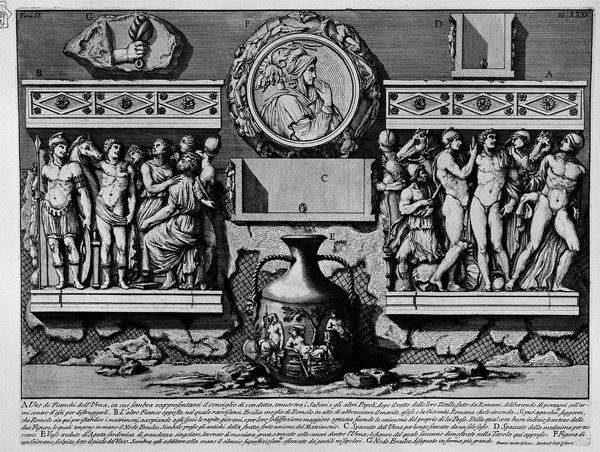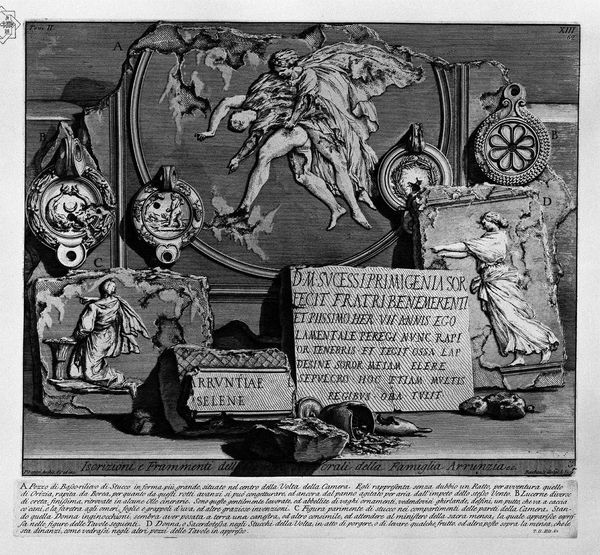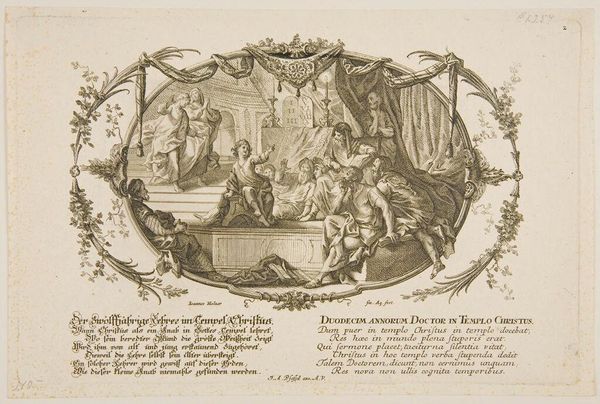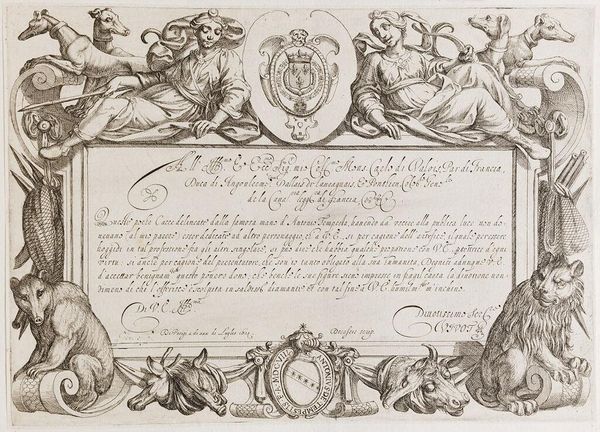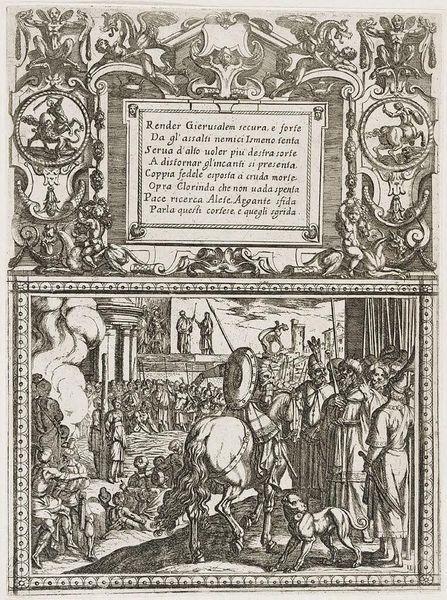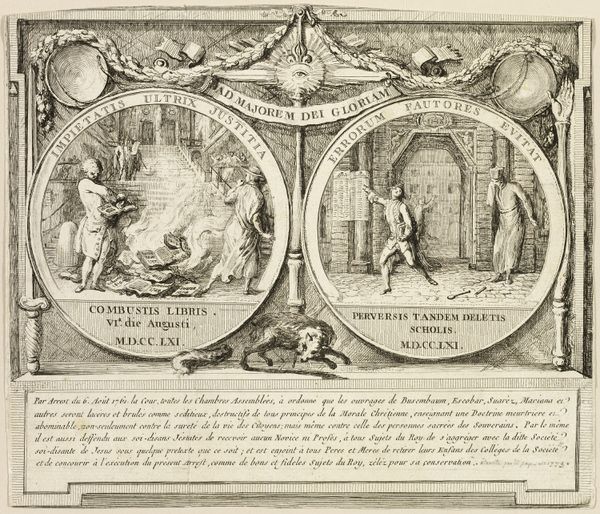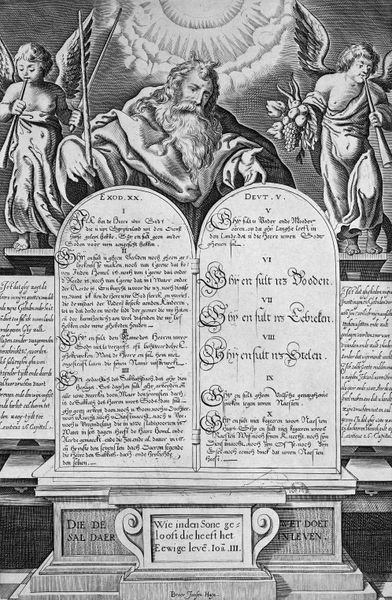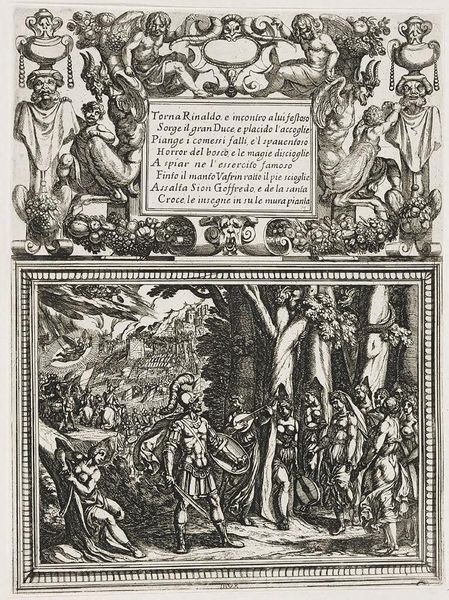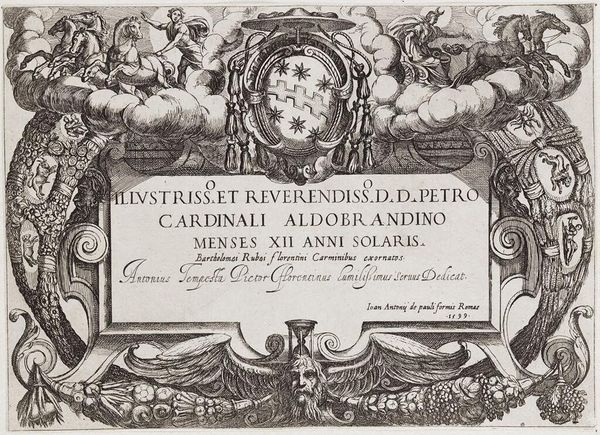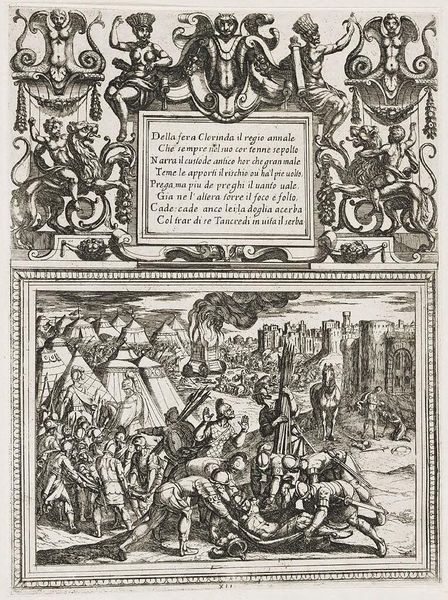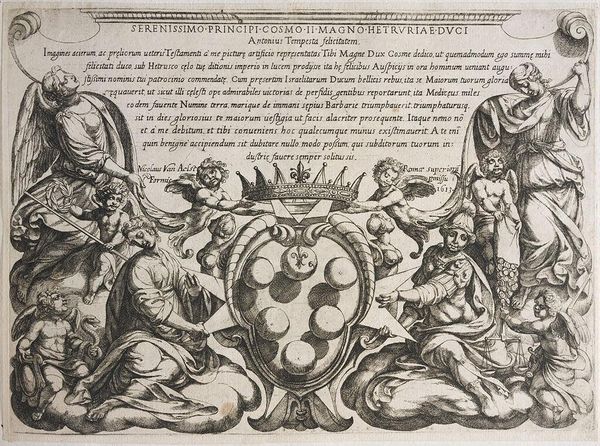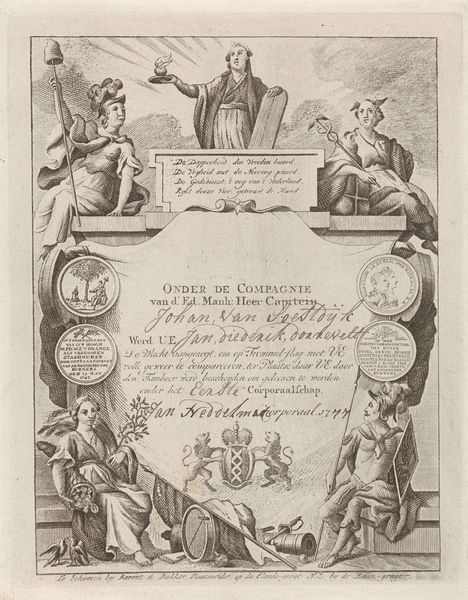
Habitus variarum orbis gentium / Omnium pene Europae, Asiae, Aphricae atque Americae Gentium Habitus 1581
0:00
0:00
drawing, print, engraving
#
portrait
#
drawing
#
allegory
# print
#
figuration
#
11_renaissance
#
geometric
#
cityscape
#
history-painting
#
northern-renaissance
#
decorative-art
#
nude
#
engraving
Dimensions: Book: 21 7/8 × 16 3/4 × 1 15/16 in. (55.5 × 42.5 × 5 cm)
Copyright: Public Domain
This engraving from 1581 by Abraham de Bruyn is a title page from a book showcasing the costumes of people from around the world. The book comes at the beginning of European exploration and colonization, a period of increased interaction with diverse cultures that was nevertheless shaped by power dynamics. The image allegorically represents the four continents then known to Europeans: Asia, Africa, America, and Europe, each personified by a female figure. De Bruyn’s representation of the continents, and their people, reflects early European views of cultural identity, race, and the world. Notice how each continent is depicted with specific attributes: Asia with a camel, Africa with an elephant, America with indigenous adornments, and Europe with a bull. This speaks to how identity is mapped onto geographical spaces, with each region assigned particular characteristics. These visual cues reinforce stereotypes and the idea of the "exotic other" that served to legitimize European dominance. What does it mean to flatten diverse cultures into singular representations? The book, and this title page, highlights how early globalization was intertwined with the construction of difference. It invites us to reflect on the power of representation and its role in shaping perceptions of identity.
Comments
No comments
Be the first to comment and join the conversation on the ultimate creative platform.
